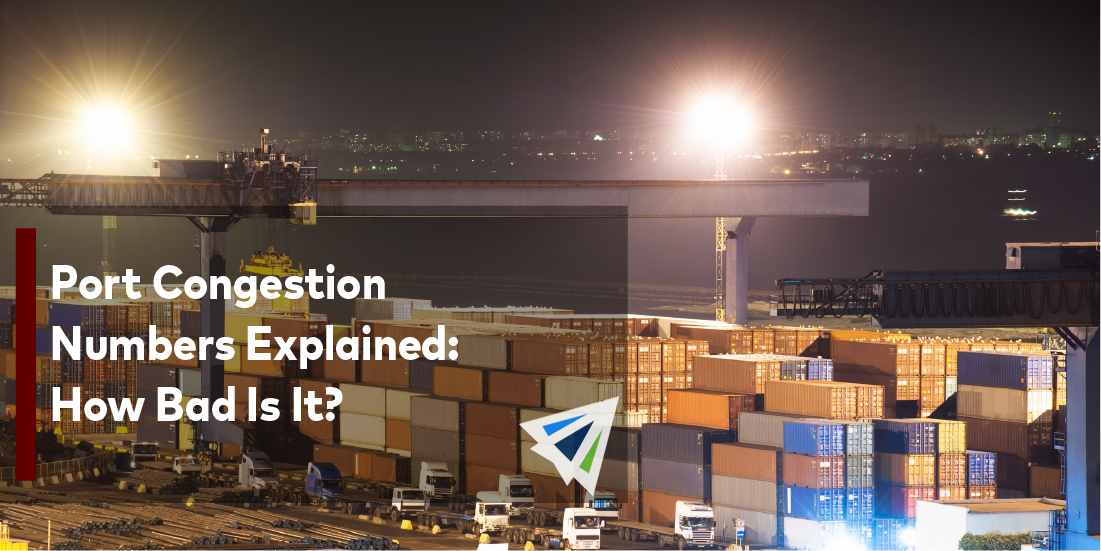It’s no secret that congestion at U.S. ports is at an all-time high. Nearly every ocean port is beyond maxed out capacity, and airports are even beginning to suffer as a result of the spill-over. U.S. imports are skyrocketing in preparation for the December holidays as businesses stock up on inventory.
We’re all used to hearing about the congestion at the ports – especially those off the coast of California – but the question remains, how bad is it really? The ports sound like they’re always congested, so why do a few extra ocean vessels make any difference?
CA Port Congestion Summary
The only way to truly understand the damage being done due to congestion at the ocean ports of Los Angeles/Long Beach is by analyzing past port activity data and comparing it to the present.
Most recent reports indicate there is an approximate 70 vessels in the queue off the coast of California. This number of ships averages out to about ~435,000 twenty-foot shipping containers awaiting docking and unloading. How severe is that? 435,000 TEU’s is approximately the volume the Port of Long Beach handled in all of August, and approximately 4 times the amount that Charleston handles every month.
For better perspective and attempting to address the congestion at the ports, experts have figured out that additional activity would have to cease at the southern CA ocean ports for two weeks straight in order to deal with the backup they’re currently experiencing. Unfortunately, that’s not the way the shipping industry works, and shippers shouldn’t be so eager to see any easy solutions in the near future.
In fact, in contrary to the above “ideal scenario,” import volumes are expected to continue to rise as consumer demand is at an all-time high.
American Shipper analyzed TEU’s by arrival date to gauge just how long and how much shipment capacity has been stuck off-shore. What they found is that 36 vessels with over 230,000 TEUs arrived off-shore in the seven days through Monday, which is about 54% of the total TEU capacity. An additional 27 ships with over 175,000 containers showed up 1-2 weeks before Monday, which was another 42% of TEU capacity. The last few ships awaiting docking arrived at the end of August/early September.
Another interesting trend as of recent is the use of smaller container ships being used on the trans-pacific route from Asia to Southern California. A larger volume of smaller-capacity ships are being used, meaning the ports of Los Angeles/Long Beach are required to dock and service more ships on average, since no large ships have been available for sale or lease in the last few months.
Earlier this year, San Pedro Bay experienced was seemed at the time to be immense congestion. Of course, with the state of the shipping industry now, it was rather mild. However, for perspective on the change in vessel count and container capacity on each vessel, here’s a run down on what happened:
On February 1st at San Pedro Bay, 40 containers were at anchor with a total container capacity of 323,000 TEU’s. 15 of the 40 ships had a capacity of 10,000 TEU’s or larger (38% of the vessels.) The average capacity of ships in that Feb 1st queue was around 8,600 TEU’s.
Compare this to the congestion we are seeing now. There were 70 ships at anchor, and 17 of those ships had capacity larger than 10,000 TEU’s (24% of the vessels.) The average capacity of ships in the most recent queue was around 6,184 TEUs, which is 24% smaller than the average capacity of vessels in the February 1st shipments.
This is important to understand, as most headlines in articles boast the increase in the number of ships drifting off shore, which has risen from 40 to 70 vessels. However, bringing the capacity of each ship into context paints a different picture. While the number of vessels awaiting docking increased 75%, from a container standpoint, the number of TEU’s only rose 34% since the ships are smaller on average.
